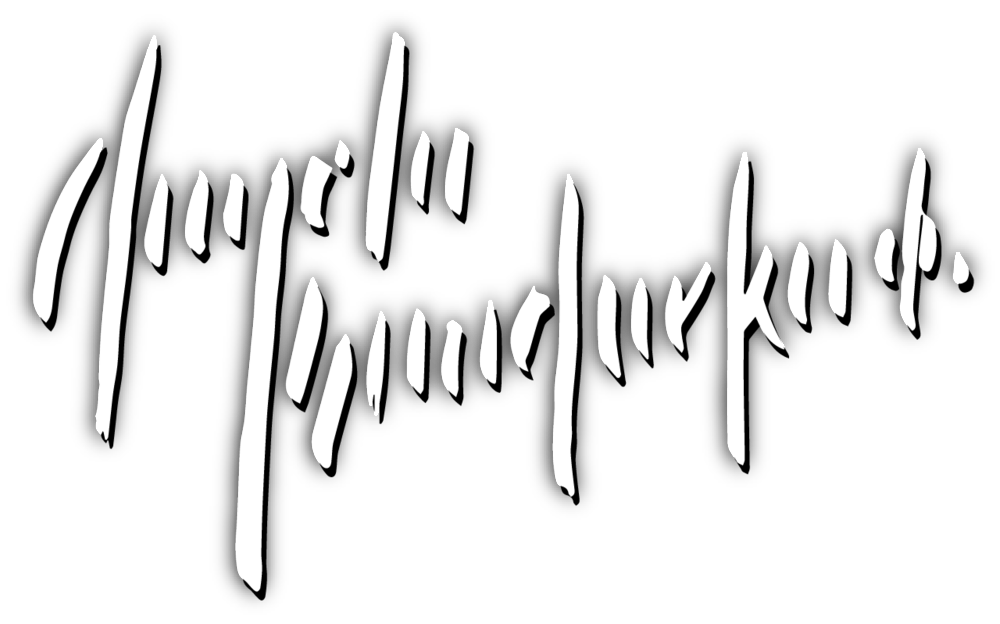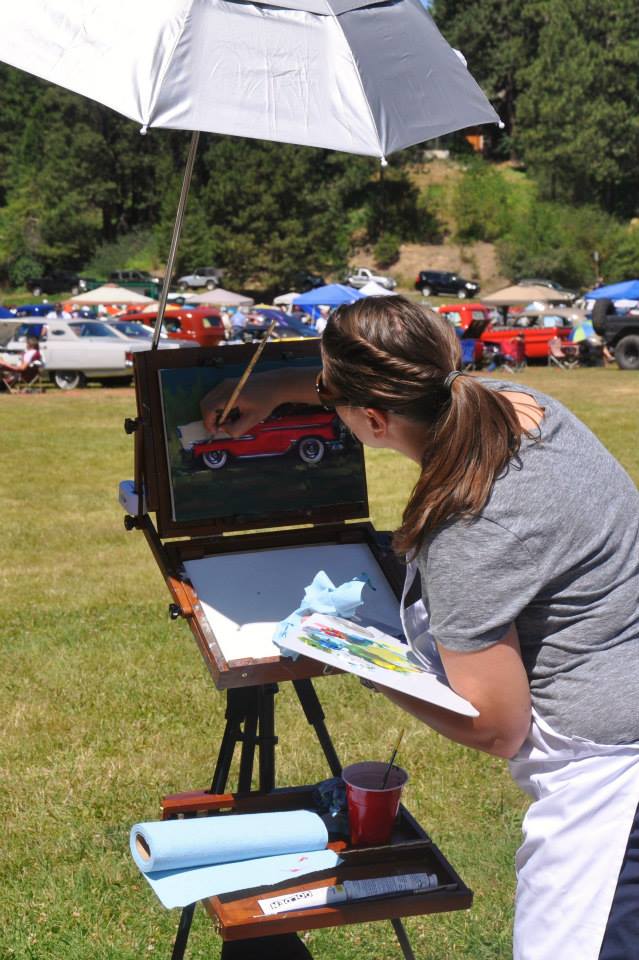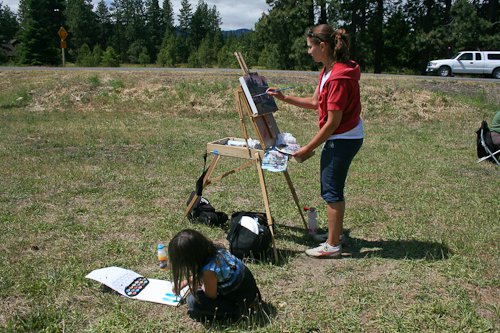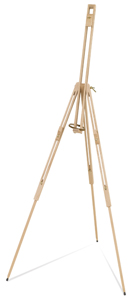When the weather starts to improve, I start to get the 'plein air' itch. (Plein Air, btw, is just a fancy schmancy way of saying that you paint outside). There's nothing like getting out into nature and painting! Before I started doing this, I was very nervous about starting: what would people think if they saw me out there? and what kinds of supplies would I need?
I'm going to try to answer that for you, here:*
EASELS
I've used a couple different kinds of easel when painting plein air. I'm going to give you my opinions (these are my opinions and only mine, I'll let you make up your own minds but hope that this will be a helpful guide until you get there);
Pochade Box: This is a little wooden box that sits atop a tripod. Super compact and is what I have been using the last couple of years. My palette sits inside the box and then I have a mini toolbox that sits on the easel below the pochade box.
PROS: Super easy to travel with as it'll fit in your backpack, best system for air travel and if you're hiking.
CONS: Can be very wiggly, and strong gusts of wind can easily tip over your setup so be sure to weigh it down with a bag of rocks or something, won't allow for larger painting supports.
French Easel: This is a nice wooden box with legs that flip out and under that box, and the top of the box flips up and holds your support.
PROS: Can hold all your supplies, offers a larger working size, makes a nice studio easel and well, also works as a table easel, very sturdy.
CONS: Those legs are a bit of a pain to set up and take down and even break after a few years, sometimes your brushes may slip out of a crack in the side when you're setting up/taking down, Heavy to carry and kind of awkward when hiking through the bush.
Field Easel: These easels are the least expensive option, and look like the letter "A" with a back leg steadying the whole thing.
PROS: Affordable, compact, accommodates many sizes.
CONS: Very easily tipped over, be sure to weigh it down; you will have to hold your palette while you paint so be sure to get one that's comfortable to hold.
PAINTS
Call me crazy, but I love painting outdoors with my acrylic paints! Yes, they dry quickly; but if you know how to work them outside they're amazing. And I don't use a retarder to slow the dry time. I have played around with the new OPEN Acrylics but I found them to get sticky and strange so I gave them up after one season. Water soluble Oils are my next favourite options for plein air - the trick with oils is to make sure you park nearby to store your wet paintings in. Or have a compact wet paint carrier. Have I mentioned that I love to paint outdoors with my acrylics? I can stack my finished pieces and throw them into my luggage for the flight home!
Only pack the basic colours, don't try to carry your entire palette.
Here is my basic plein air palette:
- Titanium White
- Titanium Buff
- Dioxazine Purple (you might want black, this is what I use for black instead)
- Anthroquinone Blue (super dark, but I can lighten easily)
- Cadmium Yellow Light
- Cadmium Red Medium (my warm red)
- Quinacridone Crimson (my cool red)
- Burnt Umber
- and sometimes I'll bring Turquoise Deep as well (my warm blue)
SUPPORTS
This is a painting that was done on a Arches hot-pressed watercolour paper block and later mounted to a canvas.
Canvas or board? I have brought prepped canvases with me, but they're bulky. Boards are awesome, but then I have to frame them (I don't want to have to do that if I don't have to) - so my favourite supports are either:
- Real Canvas Pad: this is a pad of actual canvas. You can paint on this and then easily roll it to ship home or fit into your luggage easily
- Primed Oil or Watercolour Paper: I prefer to paint on the hot pressed watercolour paper that I gesso before painting on. If I'm using oils, I'll paint on Oil Paper! Then if a piece turns out well, I can mount it on to a cradled board or canvas (see my blog post from March 2014 for steps on how to do that: http://www.angelabandurka.com/blog/2014/3/13/old-trusty-faithful)
PALETTE
Paper palettes are the most compact and disposable option, and therefore are my favourite when traveling. But I also love the New Wave acrylic palette. The smooth surface of the acrylic palette makes it all right for the paints to dry - they'll just peel off. Done!
OTHER
- I'll bring a few pairs of non-latex gloves for keeping my hands clean
- some paper towel (I prefer the blue shop towels)
- a couple of plastic shopping bags for my garbage
- lots of fresh, clean water to keep me hydrated
- a camera so that I can double check my values back in the studio and touch up my paintings
- sunscreen, and a hat! maybe even an easel umbrella
- a cell phone
- any permits necessary (sometimes I am traipsing around forestry service roads or state parks and ignorance just won't cut it, people!).
A NOTE ABOUT AIR TRAVEL
Flying with your paints can be tricky. What I do to avoid trouble is I load my tubes into a ziploc bag and pack with my checked luggage; along with a printout of the MSDS Health & Safety Sheet (Golden has them available for printing at http://www.goldenpaints.com/healthsafety/msds/; check to see if your brand has some). Travel with watercolour paint is easier - I use pan paints and then there isn't any fear of them being tossed.
*NOTE: I'm just one person showing you my methods. That doesn't mean I'm right! It just means that this is how I do it and if you have a better way to do it - go for it (but be sure to tell me, too. Never stop learning and improving :)




